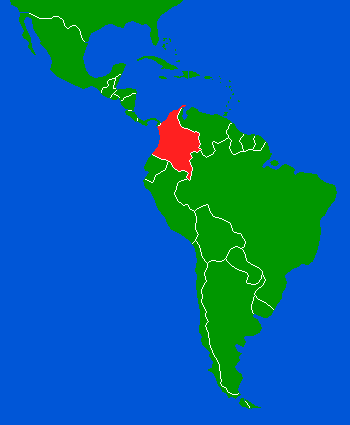
Circle the area on this map

C. Colombia is bordered by Ecuador and Peru to the south, the Pacific Ocean to the west, Panama to the northwest, the Caribbean Sea to the north. Venezuela to the east, and Brazil to the southeast.
B. Panama declared its independence from Colombia in 1903 – with the support of the United States, which wanted to complete a canal between the Atlantic and Pacific oceans. The United States quickly recognized the new nation, and other countries followed. Colombia finally recognized Panama as a separate nation in 1909.
A. Fidel Castro’s 1958 revolution in Cuba inspired many communist and left-wing rebels throughout Latin America. And, Cuba later trained and equipped rebels in Colombia and elsewhere. Leftist candidate Gustavo Petro left a now defunct rebel group decades ago. His opponent, Rodolfo Hernández, 77, refused to pay ransom to another guerrilla group that kidnapped his daughter in 2004. She is presumed dead.
D. An estimated 6 million Venezuelans have fled their homeland in the wake of a left-wing government taking power and a subsequent economic collapse. A combination of plunging oil prices, U.S. economic sanctions and failed government policies left 95 percent of Venezuela’s people in poverty. Colombia has most of the refugees, who also fled to Brazil, Ecuador, Peru and other South American nations.